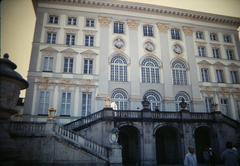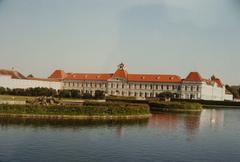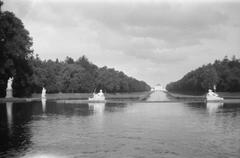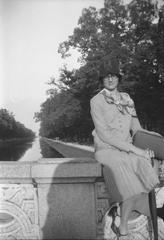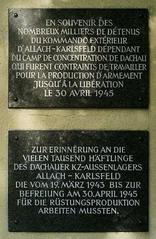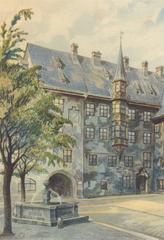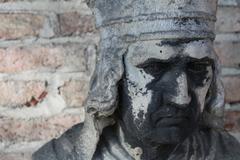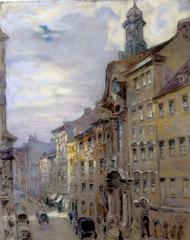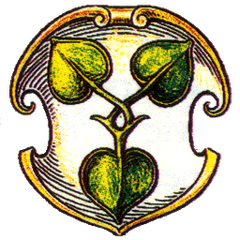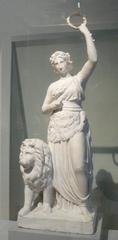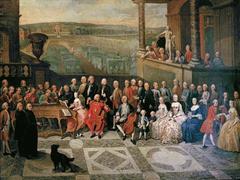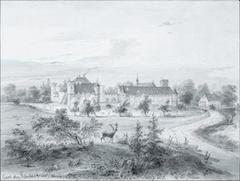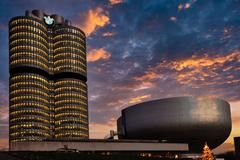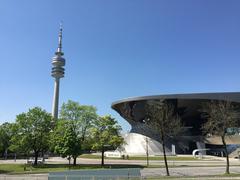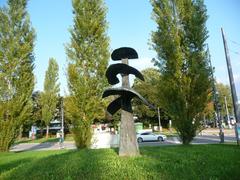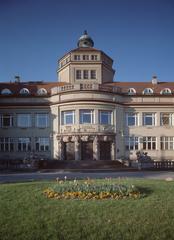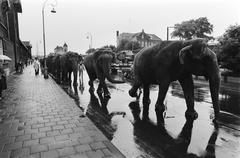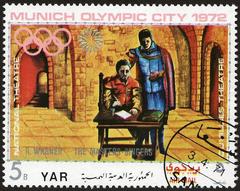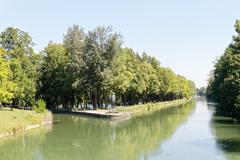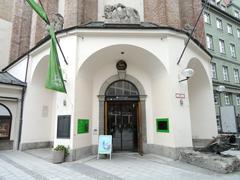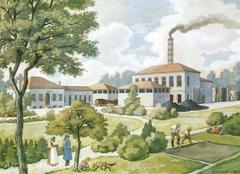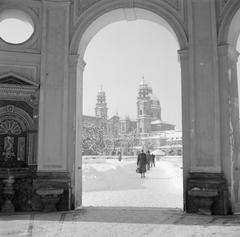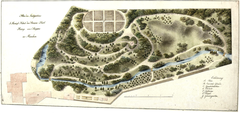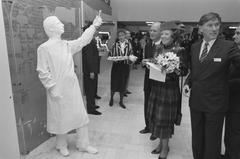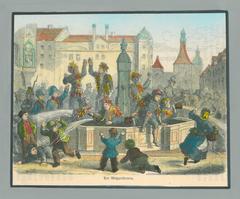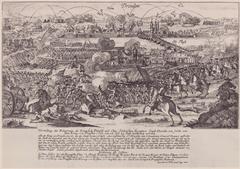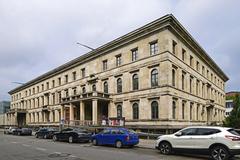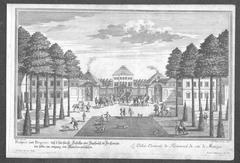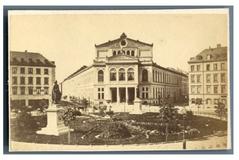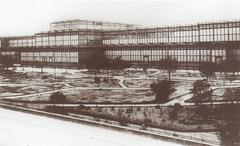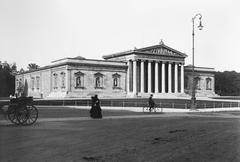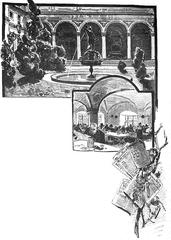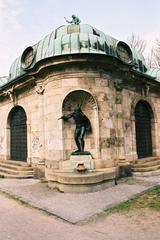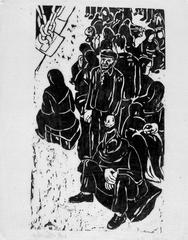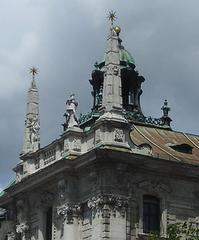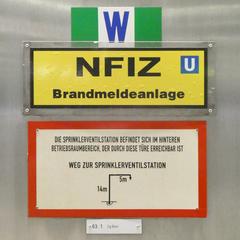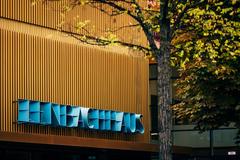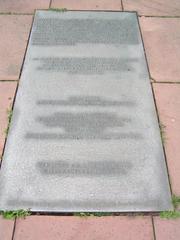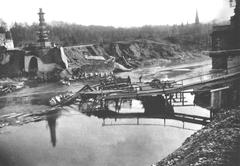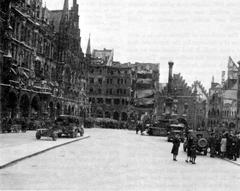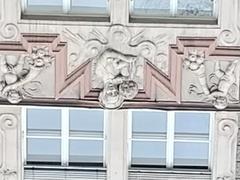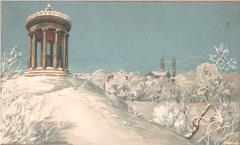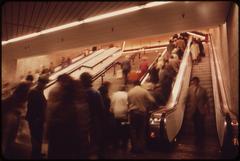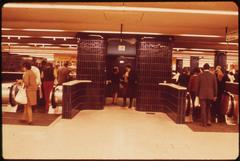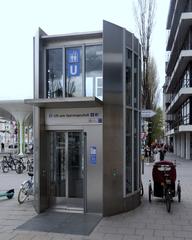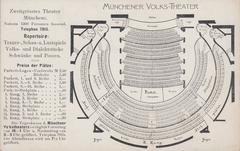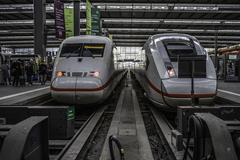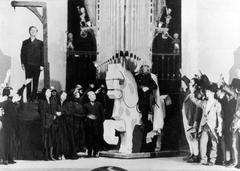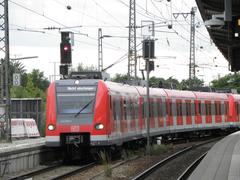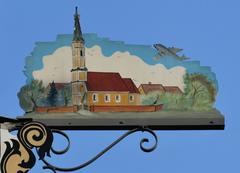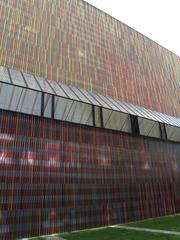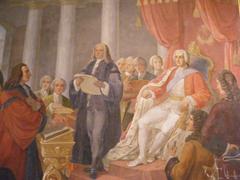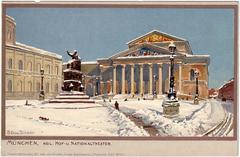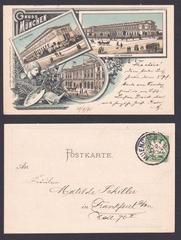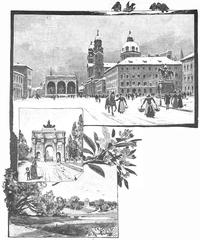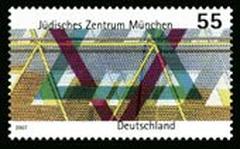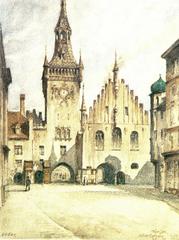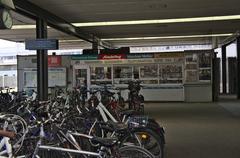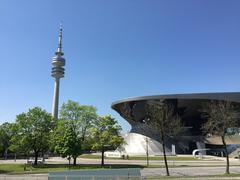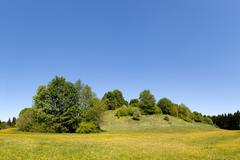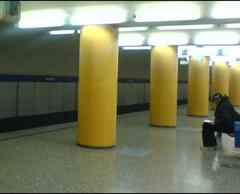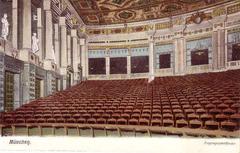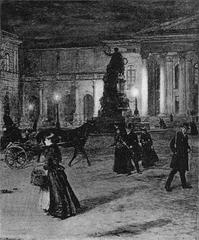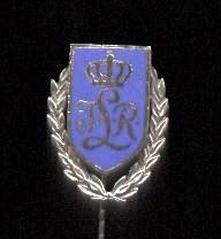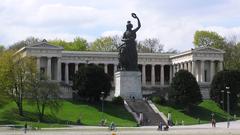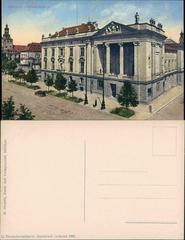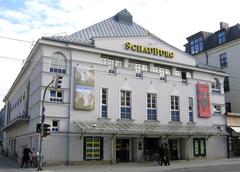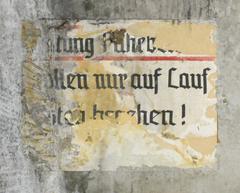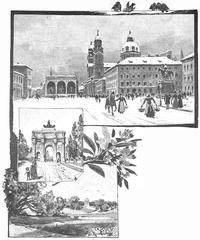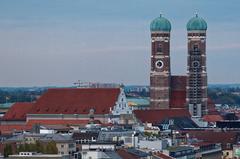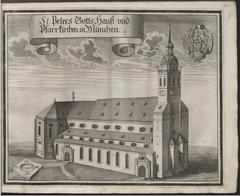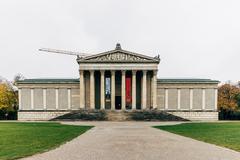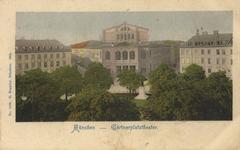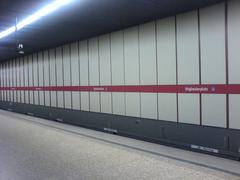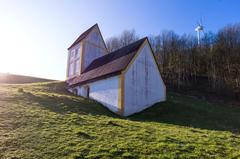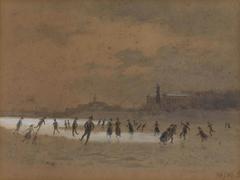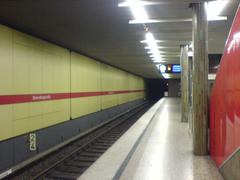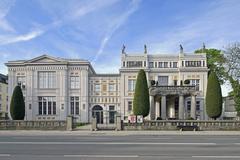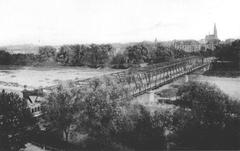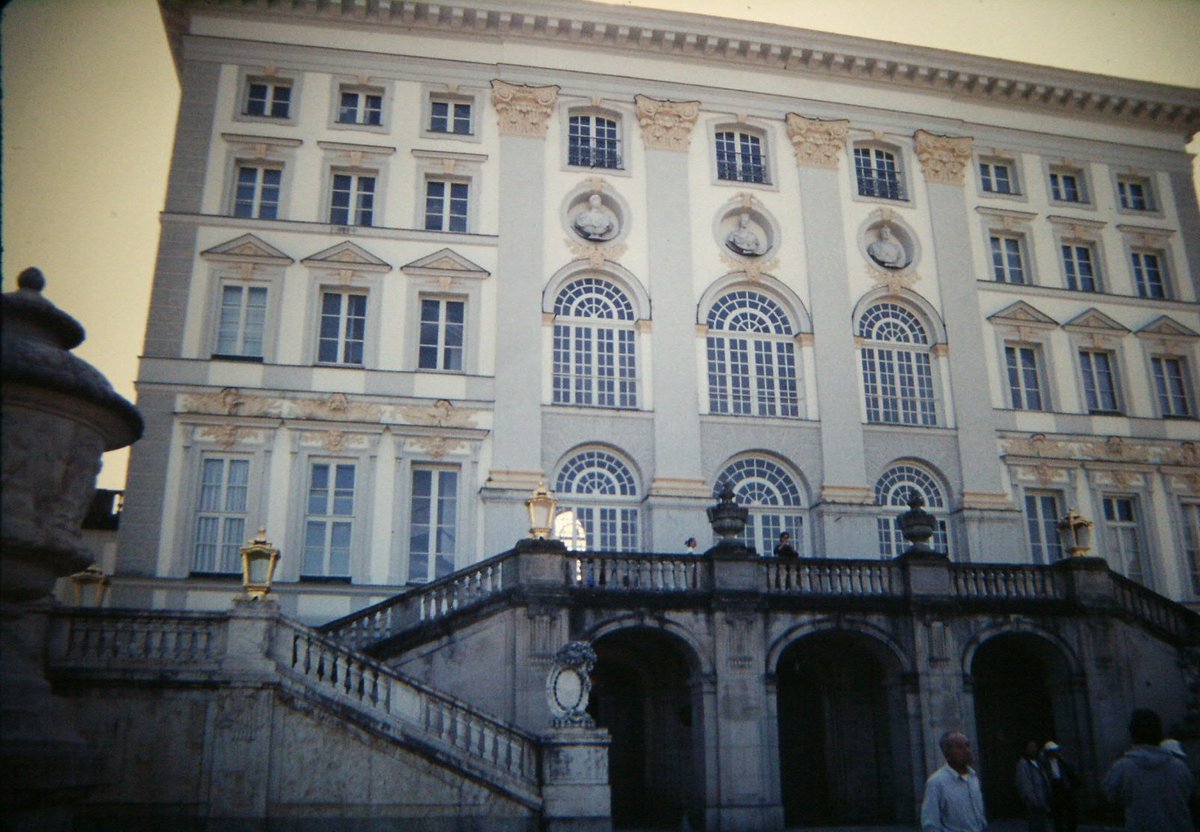
Visiting Hours, Tickets, and Attractions at Schloss Nymphenburg, Munich
Date: 17/07/2024
Introduction
Schloss Nymphenburg, or Nymphenburg Palace, located in the western part of Munich, Germany, stands as a magnificent testament to Bavaria’s rich cultural and historical heritage. Commissioned in 1664 by Elector Ferdinand Maria and his wife, Henriette Adelaide of Savoy, to celebrate the birth of their son Maximilian II Emanuel, the palace’s initial construction was spearheaded by Italian architect Agostino Barelli (Munich Tourist Information). Over the centuries, Schloss Nymphenburg evolved through various architectural styles, including Baroque, Rococo, and Neoclassicism, under the guidance of renowned architects like Enrico Zuccalli and Giovanni Antonio Viscardi (Bavarian Palace Department).
A key summer residence for the Bavarian monarchy, the palace has hosted numerous significant historical events and dignitaries, underscoring its importance in Bavarian political and cultural life. Its grandeur is further highlighted by the creation of the Nymphenburg Porcelain Manufactory in 1747, which continues to produce exquisite porcelain to this day (Nymphenburg Porcelain Manufactory). Today, Schloss Nymphenburg is one of Munich’s most visited attractions, offering visitors a chance to explore its opulent rooms, beautiful gardens, and historical exhibits. This comprehensive guide will provide detailed insights into the palace’s history, architectural highlights, visitor information, and much more, ensuring a memorable visit.
Table of Contents
- Introduction
- Origins and Early Construction
- Expansion and Baroque Transformation
- Rococo Influence and Further Enhancements
- The Nymphenburg Porcelain Manufactory
- 19th Century: Royal Residence and Public Access
- World War II and Post-War Restoration
- Modern-Day Significance
- Architectural Highlights
- Gardens and Parklands
- Visitor Information
- FAQ
- Conclusion
Origins and Early Construction
Schloss Nymphenburg’s history dates back to the 17th century. The palace was commissioned by Elector Ferdinand Maria and his wife, Henriette Adelaide of Savoy, to celebrate the birth of their son, Maximilian II Emanuel, in 1664. The initial design by Italian architect Agostino Barelli set the stage for what would become a Baroque masterpiece. Construction began in 1664 and was completed in 1675 (Munich Tourist Information).
Expansion and Baroque Transformation
Under Elector Max Emanuel, who became Elector in 1679, the palace underwent significant expansion. Architects Enrico Zuccalli and Giovanni Antonio Viscardi transformed it into a grand Baroque structure. Between 1701 and 1704, the central pavilion was expanded, and additional north and south pavilions were added, connected by galleries (Bavarian Palace Department).
Rococo Influence and Further Enhancements
The 18th century brought further enhancements under Elector Karl Albrecht and his son, Elector Maximilian III Joseph. The palace’s interior was redesigned in the Rococo style by artists François de Cuvilliés, Johann Baptist Zimmermann, and Johann Baptist Straub. The Steinerner Saal (Stone Hall), a grand ballroom adorned with frescoes and stucco work, exemplifies this period’s artistic achievements (Munich Residenz).
The Nymphenburg Porcelain Manufactory
In 1747, Elector Max III Joseph established the Nymphenburg Porcelain Manufactory within the palace grounds. Renowned for producing high-quality porcelain, the factory remains operational today, continuing a tradition of exquisite craftsmanship (Nymphenburg Porcelain Manufactory).
19th Century: Royal Residence and Public Access
During the 19th century, Schloss Nymphenburg served as a royal residence for the Bavarian monarchy. King Ludwig I and his successors made several modifications to the palace and its gardens. In 1826, the palace was opened to the public, allowing visitors to explore its opulent rooms and extensive parklands (Bavarian Palace Department).
World War II and Post-War Restoration
Schloss Nymphenburg suffered damage during World War II, particularly from Allied bombing raids. Extensive restoration efforts in the post-war years preserved the palace’s historical and architectural integrity, completed by the 1960s (Munich Tourist Information).
Modern-Day Significance
Today, Schloss Nymphenburg is one of Munich’s most popular tourist attractions, drawing visitors from around the world. The palace complex includes the main building, several pavilions, and extensive gardens designed in the French and English styles. Notable features include the Amalienburg, a hunting lodge with exquisite Rococo interiors, and the Marstallmuseum, which houses an impressive collection of royal carriages and sleighs (Bavarian Palace Department).
Architectural Highlights
Steinerner Saal (Stone Hall)
The Steinerner Saal is the centerpiece of Schloss Nymphenburg’s interior. This grand ballroom, located in the central pavilion, is renowned for its stunning frescoes by Johann Baptist Zimmermann and François de Cuvilliés, depicting scenes from Greek mythology. The hall’s opulent stucco work and crystal chandeliers exemplify the Rococo style’s elegance and grandeur (Munich Residenz).
Amalienburg
The Amalienburg, a hunting lodge within the palace grounds, is a masterpiece of Rococo architecture. Designed by François de Cuvilliés for Electress Amalia, the lodge features a lavishly decorated Hall of Mirrors, intricate stucco work, and elaborate frescoes. The Amalienburg is considered one of the finest examples of Rococo design in Europe (Bavarian Palace Department).
Gardens and Parklands
The gardens of Schloss Nymphenburg are a testament to the evolving landscape design trends from the 17th to the 19th centuries. The original Baroque garden, designed by Dominique Girard, was later transformed into an English-style landscape park by Friedrich Ludwig von Sckell. The park features ornamental lakes, fountains, and pavilions, including the Pagodenburg and Badenburg, each showcasing unique architectural styles and historical significance (Munich Tourist Information).
Visitor Information
Visiting Hours
Schloss Nymphenburg is open daily from 9:00 AM to 6:00 PM during the summer months (April to October) and from 10:00 AM to 4:00 PM during the winter months (November to March). Note that some pavilions and attractions within the palace grounds may have different opening hours.
Tickets and Guided Tours
Tickets for Schloss Nymphenburg can be purchased online or at the entrance. Prices vary depending on the areas you wish to visit. A combined ticket for the palace, park pavilions, and Marstallmuseum is available. Guided tours are also offered in multiple languages, providing detailed insights into the palace’s history and architecture.
Travel Tips
- Getting There: Schloss Nymphenburg is easily accessible by public transport. The tram lines 16 and 17 stop at “Schloss Nymphenburg,” and the S-Bahn station “Laim” is a short walk away.
- Best Time to Visit: Spring and summer offer the best weather for exploring the gardens, while winter provides a quieter experience with fewer tourists.
- Nearby Attractions: Consider visiting the nearby Botanical Garden Munich-Nymphenburg and the Hirschgarten beer garden for a complete day out.
FAQ
What are the visiting hours for Schloss Nymphenburg?
Schloss Nymphenburg is open daily from 9:00 AM to 6:00 PM during the summer and from 10:00 AM to 4:00 PM during the winter.
How much do tickets cost?
Ticket prices vary depending on the areas you wish to visit. A combined ticket for the palace, park pavilions, and Marstallmuseum is available.
What is the best time to visit Schloss Nymphenburg?
Spring and summer offer the best weather for exploring the gardens, while winter provides a quieter experience with fewer tourists.
Conclusion
Schloss Nymphenburg stands as a testament to Bavaria’s rich cultural and historical heritage. From its Baroque origins to its Rococo enhancements, the palace offers a captivating journey through time. With its beautiful gardens, exquisite interiors, and significant historical impact, it’s a must-visit destination in Munich. Plan your visit today, and don’t forget to check out related articles for more exciting travel tips and historical insights.
References
- Munich Tourist Information. (n.d.). Retrieved from https://www.muenchen.de/sehenswuerdigkeiten/orte/120345.html
- Bavarian Palace Department. (n.d.). Retrieved from https://www.schloss-nymphenburg.de/englisch/palace/index.htm
- Nymphenburg Porcelain Manufactory. (n.d.). Retrieved from https://www.nymphenburg.com/en/
- Munich Residenz. (n.d.). Retrieved from https://www.residenz-muenchen.de/englisch/palace/index.htm
- European Route of Historic Gardens. (n.d.). Retrieved from https://europeanhistoricgardens.eu/
